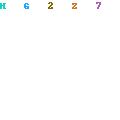While there are many ways to harness the power of segmentation, one of the broadest and most valuable applications is for designing your marketing strategy – a strategy that clearly defines who you’re targeting, what you’re going to offer them, where you’re going to reach them, and how you’re going to sell them on your product & brand.
Segmentation for designing marketing strategies is a 2-step jig
Step 1: Identify “the who”
In the first step you identify “the who”. Who are those consumers in the population who have expressed interest in your product category or who have needs addressed by your product category? In this step you’re simply separating out those interested consumers from the rest of the general population.
Step 2: Identify your target segments
The second step is where things really get cooking. In step 2 you take the population of interested consumers and group them based upon their similarities with respect to “the what, why, where & how” of your product category.
In this step your goal is to identify the most attractive segments for your business to target – segments for which the following are true:
- One or more of your products meet the segment’s functional & emotional needs
- Your existing channels for selling, servicing & awareness-building align with the segment’s channel preferences and media-consumption habits
- Your product & brand positioning align with the segment’s “reasons for buying” from both a functional and emotional perspective
- You can identify the segment in a cost-effective manner
- The segment is large enough in size and profit-potential to merit investment in a distinct marketing mix
- Are interested in one of more of your products
- Are most effectively targeted using a distinct marketing mix
- AND, are large enough to merit your investment in this distinct marketing mix
These segments will become your target segments and along with their distinct marketing mixes represent your marketing strategy. To reiterate from the intro, the beauty of this approach is that by basing part of your segmentation on similarities shared by consumers across key components of your marketing mix, the segments you derive come with their “marketing instructions” already included.
What about segments you choose not to target?
So what about segments that don’t meet enough of your targeting criteria? What should you do about them? The answer is that it depends.
For those segments large enough in size & profit potential you may consider developing new products, building out new channels, or creating communication strategies that better meet their needs and more effectively “speak to them”.
On the other hand, for those segments that are very small or that would require major retooling of your operations, extensive employee training, or significant stretching of your brand, you would likely leave to other companies to pursue.

More posts on segmentation & marketing strategy:
- What is customer segmentation?
- Segmentation and targeting
- Using the 5 W's to inform segmentation & marketing strategy
- Strategic Marketing Framework to hang on your wall
Great books & articles on segmentation:
- Making Segmentation work (PDF)
- Market Segmentation: How to do it, how to profit from it
- Counterintuitive Marketing: Achieve Great Results Using Uncommon Sense (One of the best general marketing books with a terrific chapter on segmentation




3 comments:
Nicely informative!
very intuitive...enjoyed it!
fancy presentation. i'm impressed.
Post a Comment